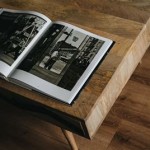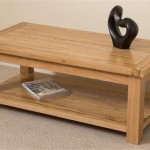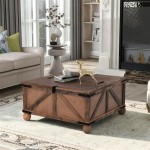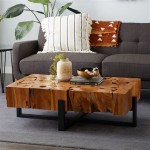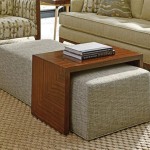The Medieval Coffee Table: A Historical and Design Perspective
As we delve into the realm of medieval furniture, the coffee table stands out as a compelling piece that reflects the unique aesthetics and cultural influences of the era. This article will explore the history, design characteristics, and significance of the medieval coffee table, providing a comprehensive understanding of its role in medieval life. ### Origins and Historical Context The medieval coffee table emerged during the Middle Ages, a period spanning from the 5th to the 15th century. During this time, coffee was not yet widely consumed in Europe, and the term "coffee table" did not exist. However, tables served various purposes in medieval households, including dining, working, and socializing. ### Design Characteristics Medieval coffee tables were typically crafted from solid wood, such as oak, walnut, or pine. The design often featured a rectangular or square top supported by four legs or a central pedestal. The legs might be straight, turned, or carved with intricate patterns. One defining characteristic of medieval coffee tables was their simplicity and practicality. The focus was on functionality rather than elaborate ornamentation. The tables were sturdy and durable, built to withstand the rigors of daily use. ### Social and Cultural Significance In medieval times, the coffee table occupied a central place in the home. It served as a gathering spot for family and guests to engage in conversations, share meals, and engage in various activities. The table also played a role in medieval rituals and ceremonies. Medieval coffee tables were often decorated with carvings or paintings that depicted religious scenes, mythical creatures, or heraldic symbols. These decorative elements reflected the cultural and religious beliefs of the time and added a touch of artistry to the otherwise utilitarian furniture. ### Evolution and Legacy Over time, the medieval coffee table underwent changes in design and usage. As coffee became more popular in Europe, coffee tables specifically designed for serving coffee and other beverages emerged. These tables were smaller in size and featured a lower height, making them convenient for sitting around and enjoying a cup of coffee. The influence of the medieval coffee table can still be seen in modern furniture design. Many contemporary coffee tables draw inspiration from the simplicity and functionality of medieval designs. The use of solid wood, clean lines, and understated ornamentation are all elements that can be traced back to the medieval era. ### Conclusion The medieval coffee table stands as a testament to the ingenuity and craftsmanship of medieval artisans. Its simple yet functional design, coupled with its social and cultural significance, makes it an enduring symbol of medieval life. Whether it was used for dining, working, or socializing, the medieval coffee table played a pivotal role in shaping the everyday experiences of people during that era.
Blackwood Medieval Coffee Table Furniture Dining Chairs

Spanish Style Chest Coffee Table Hand Forged Iron Banding And Hinges

Medieval Forged Iron And Hardwood Wagon Or Chariot Wheel Coffee Table Tavern Display

Large Gothic Mid Century Wooden Square Coffee Table Antique

Handmade Medieval Knight Coffee Or Side Table 1960s For At Pamono

Medieval Forged Iron And Hardwood Wagon Or Chariot Wheel Coffee Table At 1stdibs End

Vintage Solid Oak Coffee Table By Guillerme And Chambron 1950
Oak Butcher Block Coffee Table Tables

Vintage Handmade Wooden Side Table For Medieval Knights 1960

Coffee Table Florence


